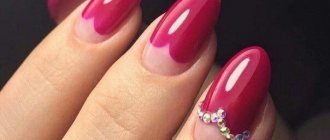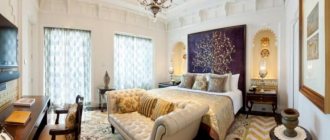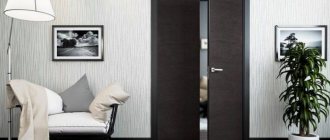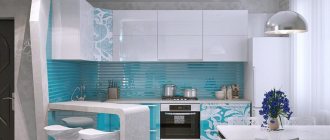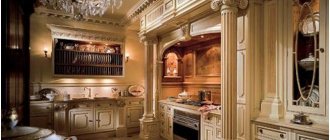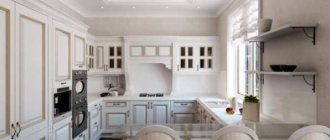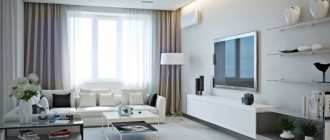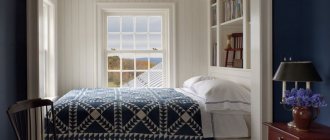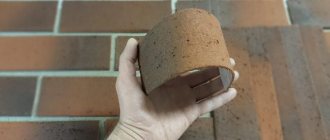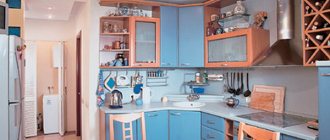Decorating an aquarium is not an easy task, especially if you are new to this business and have only recently acquired fish. There are a huge number of decorative elements for these purposes on sale: a variety of driftwood, stones, corals, grottoes and ornamental plants. You can, of course, choose an original solution - a model of a castle or a sunken pirate ship. But what is the best way to cope with the task of original aquarium design and competently arrange the space of the tank so that the silent inhabitants feel like they are in their natural environment?
In order to end up with an aquarium that meets your ideal, familiarize yourself with the design traditions of this glass tank and the details of the functional purpose of each element, because these are not just decorative elements of the aquarium interior.
Ground litter
One of the key components, which, along with the decorative component, also plays a functional role, is the substrate for plants. In addition, the soil acts as a mechanical filter, responsible for the absorption of water polluting particles. There are three types of soil mixture for aquariums:
- Natural. It includes pebbles, crushed stone, sand and gravel.
- Soils obtained as a result of chemical or mechanical processing of natural materials.
- Artificial.
When choosing a product for your aquarium, pay attention to the size and volume of the granules it consists of. For ground coatings in an aquarium, the optimal size of the balls is 2-8 mm. The diameter of the granules is selected depending on the purposes of decoration, the presence of living plants and their species, and the species diversity of fish living in the aquarium.
Please note that you can buy soil of any color for an aquarium. The myth that it is permissible to use only dark-colored bedding has long been refuted. The main thing is that the color scheme is characteristic of the overall design of the tank.
Design style
Since there are countless design styles, we will highlight only the main ones. These examples are the most popular among users:
Pseudo-sea. It is characterized by the fact that during design a high-quality imitation of the seabed is created. For this, all the elements that can be found in the vicinity of the same coral reef are used (corals themselves, unusual shells, characteristic sand). Freshwater space can be decorated with ceramics, light-type soil, and pirate accessories. When the design of the tank is ready, it is populated with brightly colored fish. Decorative cichlids can boast of this;
Forced herbalist. A style with a self-explanatory name was noted for its original approach to design. The emphasis in such an aquarium is exclusively on plants. Small fish are either far in the background (a striking example is the characin family) or are completely absent. Sometimes they are replaced with shrimp. But compositions of green inhabitants of the underwater world should delight the owners. To maintain them in proper condition, CO2 and various additives are used. Additionally, the installation is decorated with decorative driftwood and stones;
Small desktop version
Unforced herbalist. The difference between this type of design and the previous one is that a large number of fish are observed here (from characins to cyprinids). At the same time, there may be no less plants, snags and stones. This style is designed to imitate the natural habitat for aquarium fish. Design in this style can be found among most novice aquascapers;
Story aquarium. The most interesting style, since it implies unlimited creativity of the owner. The designer can advise him to choose a specific theme that can be realistically implemented. It could be a trivial sunken ship, or it could be a large metropolis underwater. There are also exotic options with football fields or railways. Only imagination dictates to the owners how to fill such an aquarium with accessories;
Aquarium "Vanguard". It implies a riotous combination of colors or an emphasis on one particular picturesque color. The latter should attract the views of all guests without exception. It is allowed to use all kinds of forms to attract more attention. In order for the fish to feel natural in such an environment, the owners must competently approach the adjustment of the biological balance;
Biotope aquarium. The approach to organizing this type of water world is somewhat similar to plot style. The only difference is that the natural environment of a particular biotope must be imitated here. This could be the nature of the clayey Ganges, the green Amazon, Lake Baikal, etc. All elements in such an aquarium are selected to match the chosen area: appropriate soil, plants growing there, aquatic inhabitants. This will favorably emphasize the conceptual taste of the home owners;
Aquarium with show fish. The design of the aquarium should be tailored for a large fish, which needs space and volume. The scenery plays a secondary role, since the main emphasis is on the shape of the fish itself. It could be a knifefish, arawana, etc.;
Industrial aquarium. If the owners are distinguished by their practicality, then they can, to the detriment of the design, refuse to use decorations and sand. Because the latter tend to get dirty. Instead, you can organize proper aeration with a water supply;
Marine aquarium using live Reef corals. The beauty of these underwater structures is due to the colorful colors of the marine polyps. It is important to remember that they do not tolerate dirty water. To prevent corals from dying, a good biobalance should be established. This will adequately imitate the depths of the ocean and the beauty of a coral reef. Maintaining such a tank will give the interior a respectable look.
Stones
Stones are often used to design an aquarium and even create entire compositions from them. They are divided into rocks of mountainous, metamorphic, volcanic, and sedimentary origin. Popular options used for decoration are:
- Slate used as a natural neutral rock.
- Gneiss is a fine-grained stone, often striped in color. Suitable for decorating any aquarium.
- Quartzite is a coarse-grained rock in which grains are intertwined with small particles. It comes in white, red, gray and goes well with underwater plantings.
- Granite - consists of feldspars, quartz, mica and is hard.
- Marble has an average density of rock, so over time it grows with small algae, forming a coating on its surface. It acts as a decorative idea for an aquarium. In its original form it has a gray, white or pink color with a variegated or striped coloring.
- Limestone is used to increase water hardness. This breed looks like small stones of white or gray color.
- Sandstone, some types of which are good at increasing water hardness.
Be careful when choosing pebbles for your fish aquarium design at home. Please note that not all types of grains of sand and pebbles are suitable for the purposes described. Most often used to decorate containers:
- gneiss;
- sandstone;
- limestone;
- granite.
Before you buy a bag of decorative stones, study their properties and effects on the state of water, namely changes in hardness/softness, acid-base balance.
What is aquarium nail design and what are its advantages?
Aquarium design is a special type of nail design, when a pattern of unusual beauty is hidden under a layer of gel, as if behind glass. Thanks to this, the design looks three-dimensional, but there are no irregularities on the surface of the nail plate. This design resembles an aquarium with beautiful flowers hidden behind the glass. Hence the name of this type of design. At the same time, under the “glass” you can place absolutely any decorative manicure decorations: dried flowers, rhinestones, mica, foil, threads, sparkles, sand, and so on. At the same time, the elements will never fall off, since they are securely fastened “inside” the nail.
Although this type of design is quite expensive, its advantages make up for it:
1.Practicality - the design does not wash out or wear out, is securely fixed inside and does not interfere with any work.
2. Convenience - even if the design is voluminous, the surface of the nail remains smooth, so the design elements do not scratch or leave puffs on the tights.
3.Durability - this design can be worn even for 3 months, unless of course you get tired of it. At the same time, the drawing is not deformed or chipped in any way. You don't have to constantly repaint your nails. And if you really want to, you can do it on top of the aquarium design. After all, even when you wash it with nail polish remover, the aquarium design will remain in its original place. And when the natural nail grows, the transition remains almost invisible.
Already want to try it? Then here are some recommendations. If you want high-quality and durable aquarium nail design , then it is better to do it only from a professional. At the same time, think about what color scheme you want for your design: colors that are too colorful may not suit everyday clothes or may simply get boring quickly.
driftwood
This type of aquarium decor is very common. Branches and snags are often used and here's why:
- This is an excellent shelter for small fish, and for some aquatic inhabitants even additional food and an excellent place for spawning. Java moss is often grown on them for decorative purposes.
- Driftwood is also used to maintain the optimal level of water acidity, necessary for the comfortable life of a number of fish families.
How to place this piece of decor does not matter, the main thing is that it fully fulfills its purpose.
Design and design of unusual aquariums with photos
A truly departure from all the usual types of aquariums, with a rather unusual design.
They will fit perfectly in a modern apartment interior, and their dual use as a sink and a table will surprise acquaintances and friends. Perfect for a shower room.
Flat aquariums are becoming increasingly common when decorating living rooms or recreation rooms.
The aquarium table is an ideal solution for small rooms; it is designed to serve both as a table and as an unusual interior decoration.
It’s up to you to decide which one to make or buy, the main thing is that the fish feel comfortable!
Shells, corals and plants
Design an aquarium using such decorative elements without much enthusiasm. In this matter, a sense of proportion and accuracy is important. But without mollusk shells at all, aquariums would look empty, and certain ecosystems would be incomplete, and their existence would be threatened without the presence of living, photosynthesizing green friends.
Before being lowered into the fish’s habitat, shells and corals are thoroughly cleaned, including undergoing long-term heat treatment.
Before you design a 100-liter aquarium or other volume using corals and plants, ask yourself the question: which decorative elements are better suited, live or artificial? The answer depends:
- on the species diversity of fish living in the aquarium;
- on the type of ecosystem (marine or freshwater);
- from the owner’s experience in aquarium farming.
In some cases, decorating tanks with living plants turns out to be impractical, for example, if there are many herbivorous fish living in it, and the water is hard.
An aquarium with a volume of 100 liters is exactly the “golden mean” of the aqua world, which allows you to realize any designer’s ideas, enjoy the beautiful view of large fish, and caring for it is not as labor-intensive as caring for an aquarium of 200-400 liters. Plus, this aquarium does not yet require the purchase of powerful, expensive equipment.
So, where does the design of a 100-liter aquarium start?
The design of a 100-liter aquarium starts with determining what kind of fish you want to put in it. According to this, you will further plan the soil, decorations and plants.
If these are schooling small fish, then the vegetation should be rich, and the decorations (amphoras, driftwood, stones) should provide the necessary place for shelter. If these are catfish, then you don’t have to worry about vegetation, but you should take care of protection in the form of large stones and snags. Fish like golden ones do not need to hide, and they quickly deal with vegetation. Therefore, for such fish you create a design to your liking.
So, to decorate a 100 liter aquarium, you need: soil, decorations, plants. For their functional distribution, it is worth first drawing a bottom design diagram or looking at it from professionals. Our AquaMegaService will tell you how to beautifully decorate a 100-liter aquarium, and advise you on the best options for designing the bottom of an aquarium for a specific style.
Let's move on to setting up a 100 liter aquarium. We choose the soil.
Which soil should I choose?
It is possible to use sand, small pebbles, gravel, granite or large stones as soil. The choice depends only on what general design you prefer: pseudo-marine - small pebbles and large stones, shells, corals; Japanese - small pebbles or sand with a nutrient base, planted with ground cover plants with prominent large stones and driftwood; Dutch style - nutritious soil with rich vegetation, transitioning smoothly from the background of tall plants to the foreground of low plants; mixed style, where everything is combined - a variety of plants and all kinds of driftwood and stones.
What should you remember when choosing soil?
Exceeding the standard amount of calcium in water affects its hardness. Calcium is obtained from the decomposition of corals and shells. Limit their number in the aquarium. Marble, limestone and tuff are not suitable for use in an aquarium. You will be pleasantly surprised by special aqua stones. They are ready for use, they are varied in color and shape, they are environmentally friendly and are produced directly for aquariums.
We distribute the soil and arrange the decorations correctly according to the laws of composition. First, the decorations are installed, then the soil is filled in, and only after that the plants are planted. If you decide to use large stones or ceramic products (locks, amphorae) in your aquarium design, then it is recommended to place plastic under them, which will protect the bottom of the aquarium from scratches and possible damage.
Various types of driftwood look beautiful. You can buy them ready-made at an aquarium store, or you can prepare them yourself.
Having placed the decorations, we pour about 5 cm of substrate under the soil in order to retain the nutrients in it longer. Next is the soil itself. It can be distributed horizontally evenly (if there are stones or driftwood in the background, they will create the effect of depth), or it can be tilted upward towards the back wall of the aquarium (this is how perspective and depth are achieved).
The wall of the aquarium, located in the background, can be decorated with decorative aquarium film, which is glued to the outside of the aquarium. But a plastic mesh with moss or climbing plants attached to it will look much more advantageous. They are attached to the mesh using fishing line. A net with plants is installed at the back wall of the aquarium inside. Another masterpiece design option for the background of an aquarium is an artificial “stone wall”. You can ask about it in our store when purchasing or ordering an aquarium.
Now you can move on to decorating a 100 liter aquarium with vegetation.
We fill the tank a few centimeters above the ground with water and plant the plants. It is worth sprinkling them with water periodically to prevent drying out. Having completed this, add water to our desired level. Fill the aquarium with water gradually, along the wall of the aquarium, so as not to displace all the decorations and plants.
The launch of a 100 liter aquarium will be completed after the installation of equipment and the settlement of fish. Find out about these nuances from our aquarium specialists. Good luck to you.
You will find more information about aquascaping and aquadesign in these articles: Aquadesign (aqua design) of an aquarium - styles and directions
Decorating an aquarium with stones and driftwood in the Japanese Amano style Decorating and launching a herbalist’s aquarium
And also several dozen articles in this feed:
Aquascaping video lesson
VIDEO Aquarium herbalist 100 liters. Guppy fish, neons, shrimp
Design rules. DIY aquarium design
When decorating a fish house, learn to combine several techniques and requirements regarding this process. Choose a design that will be in harmony with the interior of the room, and, of course, take into account the needs of the future inhabitants of the glass tank. As already mentioned, some fish do not tolerate proximity to corals and green plants, others cannot live in hard or acidic water, and still others, on the contrary, need special shelters.
Among the rules for designing an aquarium, there is an important note: try to emphasize the design of the tank with simplicity, avoiding the unnecessary use of many decorative elements.
It is best to design the aquarium in a way that is close to the natural habitat of the fish you are keeping. Use as basic materials:
- aquatic plants;
- stones;
- sand or pebbles;
- driftwood.
As an alternative, use artificial greenery; it does not poison the water and is as close to the real thing as possible.
Please note that you should only purchase aquarium decor in a specialized store that sells quality products. When choosing stones, driftwood and sand, be vigilant and pay attention to:
- For the smoothness of the stones. Make sure that they do not have sharp corners that could injure the fish.
- On the component composition of sand and the percentage of lime, clay, and mineral impurities in it.
- The fact that driftwood from a pond is not as safe as that purchased in a store and can be infected with pathogenic microflora.
Pseudo-sea design
This design is perfect for aquarists who want to recreate a piece of the seascape in their premises. In addition, the pseudo-sea style is ideal for calm and peaceful fish. So what does it take to make it? First of all, a pleasant and calm background is selected for a 200 liter aquarium. For this purpose, both photos with corals and drawings depicting water can be suitable. After this, it’s time to choose lighting.
For this purpose you can use:
- neon lamp;
- cold light;
- standard light bulb.
Important! Many aquarium inhabitants, such as discus fish and guar fish, react differently to light intensity.
It is recommended to decorate the bottom with stones. Tuff stones are best suited for this style. Also, we must not forget about the indispensable attribute of such design as corals. Of course, you can use a pseudo-sea style design without stones, as shown in the photo, but then you can forget about creating such beautiful decorative structures as coral slides.
As for fish, as mentioned above, predominantly peaceful and calm species are populated. For example, discus, panaka, cichlids.
But before populating an aquarium with 200 liters of its future inhabitants, it is necessary to take into account the ratio of 7 liters per individual. This is necessary in order to avoid territorial overpopulation.
Dutch style
The style is aimed at modeling the garden. The pond is lavishly decorated with green plants, but at the same time it looks neat and organized, because all the inhabitants are in their places and arranged according to the principles, gathering according to size, color, shape, etc.
In its diversity, each representative of the fauna should complement the previous one, emphasize beauty and be arranged in tiers.
Decorating an aquarium in the Dutch style is considered to be a special art.
Basic design styles
Aquariums are a fascinating world in which there are a large number of options for design styles, according to which a closed water space is equipped.
Registration must be done taking into account several requirements:
- A style that matches the room.
- The needs of the inhabitants of the aquarium.
- Safety.
To ensure the safety of aquatic life, you need to avoid stones and snags with sharp edges, and avoid excessive levels of mineral impurities and lime in the water. Everything you use to decorate your interior space should be disinfected.
The choice of style is an individual matter, so we will provide a basic list of trends with their characteristic features. With this information, it will be easier to choose the right aquarium design.
Dutch
This style is popular with many who like lots of greenery. Many aquarium plants of different types and colors are used here, with the help of which lush thickets are created. This style first appeared in the Netherlands in the 30s of the last century.
The basic rule of decorating in the Dutch style is the almost complete absence of empty space at the bottom. The soil should be abundantly planted with vegetation and algae - at least 4/5 of the entire area.
In the very center there are often driftwood and stones that act as a static base and do not interfere with visual perception. They divide the space into three harmonious parts.
Japanese
Japanese style involves creating a harmonious composition, when you look at it you feel relaxed. There are four striking examples of decorating an aquarium space in Japanese style:
- Iwagumi (Iwa - “stone”, Gumi - “arrangement”). Features large free space. A very laconic, but quite complex style in terms of execution. The placement of stones is carried out according to several schemes and principles, resulting in the creation of a “garden of pitfalls”.
- Rio-boku. In this direction, attention is focused on large driftwood, which is complemented by natural stones.
- Vabikusa. This style is distinguished by a moss hummock peeking out on the surface of the water surface.
Marine and pseudo-marine style
Decorating a marine aquarium is one of the most popular trends, because many people want to get a small island of the deep sea in their apartment. This style involves filling with sea water and populating with fish (clownfish, zebrafish, surgeonfish, angelfish, etc.) and invertebrates (anemones, sponges, sea anemones). Here you can play with both different plant shapes and contrastingly colored sea creatures.
Almost the twin brother of this trend is the pseudo-marine style. It looks like a real piece of the seabed, but in fact, fresh water is poured into the aquarium and the inhabitants, accordingly, are freshwater. The imitation of a seascape is carried out using light soil, artificial algae, shells and corals. Additional blue lighting looks good.
Natural
Decorating aquariums in a natural style brings the interior of the aquarium closer to the fish’s habitat. Characterized by an almost complete recreation of natural landscapes with the help of driftwood and stones of different sizes (and shapes). This style is most often used for scientific observation of marine life, because the created space almost completely replicates the natural ecosystem in any area.
A variation of the natural direction is the pseudo-naturalistic style - this is an option for a limited budget. The decoration uses regular aquarium soil, substrate and plants. Not so long ago, many aquariums were decorated in this unpretentious manner.
Vanguard
The design of an aquarium in the avant-garde style is a rather bold decision. Artificial plants and soil of the brightest colors are used. This is a real space for creativity, so even the most unexpected elements will look organic here. Neon lighting is required.
It is important to understand that for such a bold decision you need to find an appropriate place, because such an aquarium will not be appropriate in all interiors. In a large house, it is better to place it on the landing, in an apartment or office - in a passage where it will attract attention.
Plot
This is a very beautiful aquarium design, which is made in the style of a cartoon plot (Finding Nemo, The Little Mermaid, etc.), a book, a fairy tale or a film. The inhabitants must match the situation - these are unpretentious fish with bright colors. Looks especially good in a children's room.
In the Japanese direction
Founder: Takashi Amano. The style involves a combination of high technology that imitates a terrestrial landscape, but at the same time the design is carried out according to the popular Zen philosophy.
Often aquariums are decorated exclusively with stones or “ivagumi”. Traditional compositions differ from underwater ones only in the number of stones. In the first case there are three of them, in the second multiple use of the material is allowed. The only condition is that the number of stones be odd and they differ in size.
A photo of a Japanese-style aquarium design cannot but delight fish lovers.
Video: how to make an aquarium nail design with gel
The aquarium design lasts on your nails for up to three to four months , of course, if you handle it carefully. At the same time, you can forget that anything will come off the nail and fall off - the illusory gel will “tightly” hold your art.
You can make a simple composition yourself at home. However, an aquarium manicure itself is a rather complex procedure , and when creating an intricate composition, I highly recommend contacting a specialist. And not just a master, but a master with a capital “M”, one who has at least some experience in this field. Don’t be scared right away, first watch the videos I suggested and you will understand the meaning of the saying “art requires sacrifice.”
Video for beginners: lessons for creating aquarium nail designs with gel
Aquarium design options
Aquarium design step by step with comments
Perhaps you will like any of the proposed aquarium design master classes .
Nail extension. Aquarium design “Blooming Garden”
Acrylic nail design with stained glass paint and aquarium effect
Natural style in aquarium design
The natural style involves the use of decor in a biotope and collection direction.
Keeping the tank space as close as possible to the natural environment characterizes this type of aquarium design. From the description of the style, it becomes clear that in biotope aquariums every detail is important, which is why special attention is paid to the arrangement of such tanks.
In a collection aquarium, fauna, flora, and landscape details are selected, recreated in the tank, based on the living conditions of a certain family or genus of representatives.
This type of decor is more suitable for those who professionally deal with fish, as it is aimed at recreating a collection of all species of fish or plants belonging to the same genus, and further monitoring their behavior and reproduction characteristics.
Aquarium: DIY design (photo)
Today it is not difficult to implement turnkey design solutions for the interior and exterior design of aquariums. Modern studios offer the most unusual variations in the artistic design of hidden depths. However, if you wish, you can create your own personal project, making a truly unique aquarium. A do-it-yourself design will allow you to bring any idea to life, making the created underwater world the main element of the interior of the room.
Aquadesign
Aquarium - interior element
Thanks to their unusual beauty, modern aquariums can become a real pearl of any interior. The variety of styles and shapes is simply amazing. Aquariums can be suspended, floor-mounted, or built-in. Diorama aquariums create a stunning effect indoors; their shape seems to promote immersion in the exciting aquatic world. A hand-decorated version improves well-being and lifts your spirits. Today it is not uncommon to even have a dry aquarium. The design, carried out with your own hands, allows you to give yourself an unusual creative concept of a seascape. Many solutions can be created through an incredible flight of creativity. It's definitely simple and incredibly fun!
fb.ru>
Types of aquariums
Decorations for the object environment of the underwater world serve as a win-win decoration for the aquarium. But the main component of the interior design is its thriving biosystem.
Aquariums according to their purpose are divided into decorative and special (spawning, selection, nursery, quarantine and others). The most popular of them are species and biotope.
A species aquarium will not only decorate the interior of your home, but will also give you a unique opportunity to observe a certain type of fish or their closely related species. Its inhabitants have a significant influence on the design of the aquarium. It’s not at all difficult to design it with your own hands, but before implementing the idea, you should seriously familiarize yourself with the habits of the selected fish in their natural habitat.
Biotope aquariums reproduce an imitation of any natural biotope with a characteristic appearance of fish, plants and certain parameters of their usual habitat.
Design styles
Natural style
Underwater garden
Seawater aquarium
Many people today are passionate about breeding marine fish. It is more difficult to prepare a biological environment for them, especially when using living corals, which are quite demanding on water parameters. But experienced naturalists are quite capable of creating such an aquarium design with their own hands. 200 liters is the optimal average volume for enjoying the contemplation of the underwater world. It should not be overpopulated with living beings, since such a tank has a limited life support system.
It is necessary to design a marine aquarium taking into account its appearance, which not least depends on the inhabitants. These can be predators (sharks, rays, moray eels), non-predatory fish (zebrasoma, angelfish and other species) or corals and invertebrate sea anemones. Predatory fish are considered the most unpretentious; invertebrates are more difficult to care for and can die from minor deviations in the chemical parameters of water.
To support the life support of such aquariums, it is worth purchasing expensive equipment. It will need to be decoded, this is worth taking into account when designing an aquarium with your own hands. The photo demonstrates how successfully you can hide all the wires, hoses and tubes, decorating the background with picturesque coral reefs, rocks and shelters for fish in the form of mysterious grottoes and caves.
Aquascape
Aquarium background
Sea style
A distinctive feature of such an aquarium is that the tank is filled with salt water and populated with marine life. These can be not only fish, but also other representatives of the abyss, for example, invertebrates - anemones, corals, crustaceans.
Look at the photo of the design of a 200 liter aquarium in a marine style. The riot of color in the coloring of animal forms and plants gives a marine aquarium a special effect and makes it stand out against the background of a freshwater one.
Remember that when arranging a fish house, it is important to have a sense of proportion and compliance with the rules of the chosen style. This is the only way you can achieve the desired result in the design of 200 liter aquariums or other containers, regardless of their volume.
